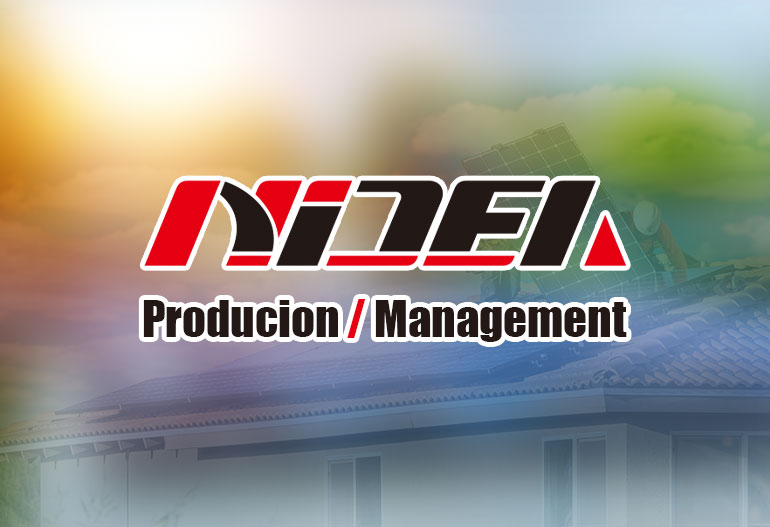Environmental Requirements and Ventilation Design for High-Frequency UPS Equipment
Optimal Operating Range: According to IEEE Std 1100-2023 (Powering and Grounding Electronic Equipment), the recommended ambient temperature for high-frequency UPS is 15–25°C. Sustained operation above 30°C accelerates component aging: for every 10°C increase beyond 25°C, capacitor lifespan decreases by 50%, while IGBT junction temperature rises by 20–30°C, increasing conduction losses by 10–15% .
Temperature Uniformity: Spatial temperature gradients within the UPS enclosure or equipment room must be minimized (<5°C). Hot spots near power modules (e.g., rectifiers, inverters) can exceed ambient temperatures by 15–20°C, requiring targeted cooling .
Maximum Limits: Most manufacturers specify a maximum operating temperature of 40°C (e.g., APC Smart-UPS VT series) and a storage temperature range of -25 to 70°C to prevent dielectric breakdown in capacitors and solder joint fatigue.
Ideal Range: Relative humidity (RH) of 40–60% is recommended per IEC 62040-1-1. RH below 30% increases ESD risk, potentially damaging sensitive control circuits (e.g., DSP boards) with voltages as low as 250V .
Dew Point Control: To avoid condensation, the dew point must be at least 5°C below the coldest surface temperature inside the UPS. For example, in a 25°C environment with 60% RH, the dew point is ~16°C, requiring internal components to remain above 21°C .
Humidity Cycling: Rapid RH fluctuations (>10%/hour) can cause materials (e.g., PCBs, gaskets) to expand/contract, leading to mechanical stress and connection failures.
Derating Requirements: At altitudes >1000 meters, reduced air density impairs convection cooling. UPS manufacturers typically require derating by 1% per 100 meters above 1000m (e.g., a 10kVA UPS at 3000m operates at 80% rated capacity) .
Insulation Strength: Air insulation breaks down more easily at low pressure. For outdoor or high-altitude installations (>2000m), creepage distances between live parts must increase by 0.3mm per 100m to maintain dielectric integrity .
Particulate Matter (PM): Dust, fibers, and metal particles (PM10 and smaller) accumulate on heat sinks, reducing thermal conductivity by 30–50% within 12–18 months . NEMA Type 3R enclosures or HEPA filters (efficiency ≥99.97% for PM0.3) are required in dusty environments (e.g., industrial zones).
Gaseous Corrosion: Sulfur dioxide (SO₂), hydrogen sulfide (H₂S), and chlorine (Cl₂) react with copper conductors and silver contacts, forming conductive oxides. Per ISA 71.04, environments with SO₂ levels >10 ppb require activated carbon filtration systems .
Conduction Losses: In power semiconductors (IGBTs/MOSFETs) and transformers, accounting for 60–70% of total losses.
Switching Losses: From PWM operations, increasing with frequency (typically 20–50 kHz), contributing 20–30% of losses.
Design Features: Vertical airflow paths (bottom inlet, top outlet) leveraging buoyancy. Heat sinks with extended fins (surface area ≥0.5 m²/kW) enhance heat transfer.
Limitations: Ineffective in high-temperature or high-density installations; requires 2–3x more space than forced ventilation.
Axial Fans: Used for front-to-back airflow in rack-mounted UPS (e.g., Dell PowerEdge UPS). Operate at 2000–3000 RPM, delivering 50–200 CFM (cubic feet per minute) with pressure drops <0.5 inches of water.
Centrifugal Blowers: Preferred for enclosed systems, providing higher static pressure (1–2 inches of water) to overcome filter and duct resistance.
Redundancy: N+1 fan configurations (e.g., 3 fans for 2 required) prevent overheating during single-fan failure, as specified in IEC 62040-3.
Cold Plate Systems: Directly contact heat-generating components (e.g., IGBT modules), removing 100–500W per plate via water-glycol mixtures (flow rate 1–2 L/min).
Immersion Cooling: Submerging UPS components in dielectric fluids (e.g., 3M 氟化液) for 360° heat transfer, achieving 2–3x higher cooling efficiency than air-based systems .
Containment: Hot-aisle/cold-aisle layouts in data centers isolate UPS exhaust (35–40°C) from intake air (15–25°C), reducing recirculation losses by 20–30% .
Pressure Differential: Positive pressure inside the UPS enclosure (5–10 Pa relative to ambient) prevents unfiltered air ingress.
Duct Sizing: Duct velocity should be 8–12 m/s to balance noise (≤65 dB) and pressure drop. For a 2000W UPS, duct cross-sectional area ≥0.05 m² is required (air density 1.2 kg/m³, specific heat 1005 J/kg·K).
Temperature Setpoints: HVAC systems should maintain 21±2°C in UPS rooms, with a maximum ramp rate of 5°C/hour to avoid thermal shock.
Air Exchange Rate: 12–15 air changes per hour (ACH) in UPS enclosures ensure rapid heat removal. For example, a 10m² room with 3m ceiling height requires 360–450 m³/h airflow for 15 ACH.
Sensors: Embedded temperature (PT1000), humidity (SHT3x), and differential pressure sensors provide real-time data to ECS.
PID Regulation: Smart controllers adjust fan speed or chilled water flow based on UPS load (e.g., increasing airflow by 20% when load exceeds 70% rated capacity).
Alarms: Thresholds for high temperature (>30°C), low humidity (<30% RH), or fan failure trigger alerts via BMS (Building Management System) to prevent downtime.
Solution: Rear-door heat exchangers (RDHx) mounted on UPS racks, removing 60–80% of heat at the source, reducing HVAC load by 40% .
Weatherproof Enclosures: NEMA 4X enclosures with heaters (for <5°C) and dehumidifiers (for >60% RH) protect UPS in outdoor telecom cabinets.
Solar Gain Mitigation: Reflective coatings (emissivity >0.8) and insulated panels reduce internal temperatures by 8–12°C in direct sunlight .
Variable Speed Fans: Brushless DC fans with PWM control adjust speed proportionally to heat load, reducing fan power consumption by 30–50% compared to fixed-speed designs .
Free Cooling: Integrating outside air economizers when ambient temperature <15°C can reduce HVAC energy use by 60–70% in temperate climates .
Remedial Actions:
Installed hot-aisle containment with 12 ACH airflow.
Added dehumidifiers to maintain 50% RH.
Upgraded to variable-speed fans with PID control.
Results: Ambient temperature stabilized at 23°C, UPS efficiency improved by 1.2%, and capacitor lifespan projection extended from 5 to 8 years .
Solutions:
Deployed NEMA 3R enclosure with HEPA + activated carbon filters.
Derated UPS to 75% capacity and increased creepage distances by 5mm.
Implemented monthly filter replacement and thermal imaging inspections.
Outcomes: Mean time between failures (MTBF) increased from 3 months to 24 months .

